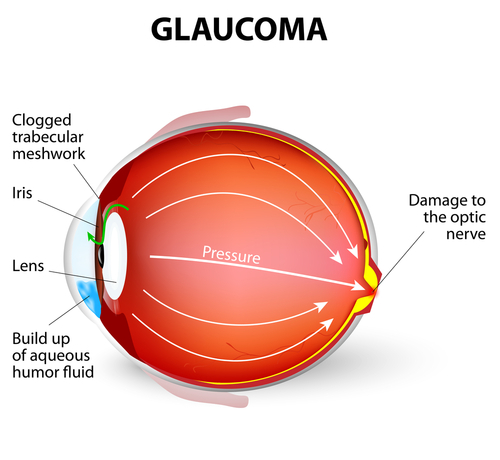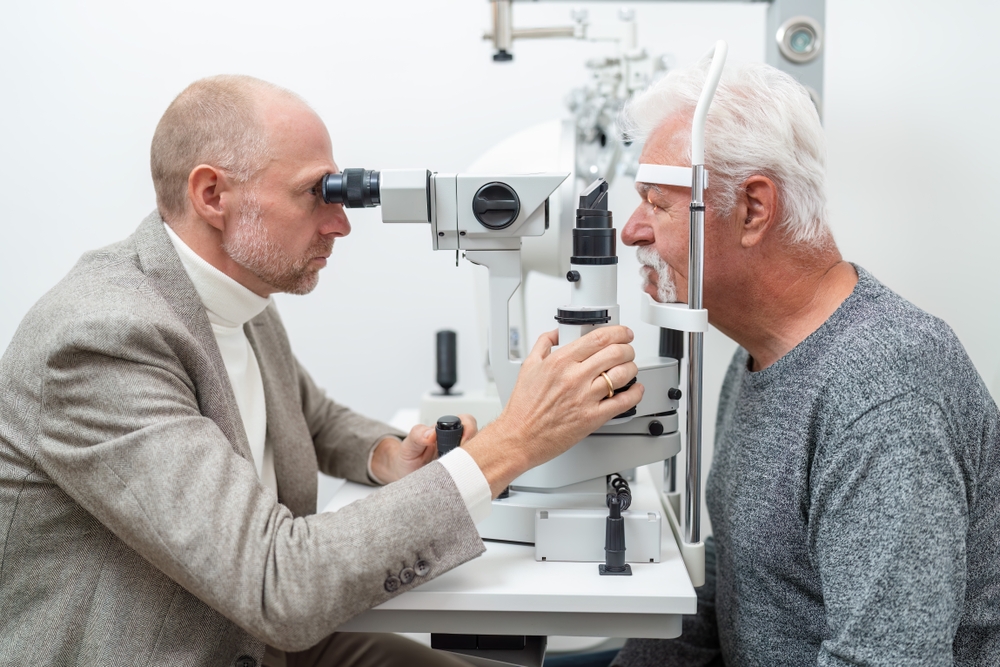Posted by: Focal Point Vision in Blog

Glaucoma affects around 80 million people worldwide, yet many don’t realize they have this sight-threatening condition until it’s already caused irreversible damage. The best way to protect yourself from vision loss is by learning about the early warning signs of this common condition and attending regular eye exams to ensure they’re caught early.
Keep reading to learn more about potential signs you could have glaucoma.
Does Glaucoma Have Symptoms?
One of the most challenging aspects of glaucoma is that it typically develops without any noticeable early warning signs. This is why eye doctors often call glaucoma the “silent thief of sight.”
The disease gradually damages the optic nerve, which carries visual information from the eye to the brain. By the time most people notice vision changes, significant and permanent damage has already occurred.
Types of Glaucoma and Their Warning Signs
Glaucoma is an umbrella term for a group of conditions that affect the optic nerve in different ways. They often present with varying signs and symptoms:
Open-Angle Glaucoma

This form develops slowly and accounts for about 90% of glaucoma cases. The drainage angle in your eye remains open, but fluid doesn’t drain properly, causing pressure to build gradually.
Symptoms, when they occur, develop slowly and may be subtle. Blind spots in peripheral vision are one of the first noticeable signs of open-angle glaucoma.
You might notice areas where your side vision seems unclear or missing, or you may experience tunnel vision that seems to narrow as if you’re looking through a tunnel. You may also have difficulty seeing in low-light conditions and problems with depth perception, which can make it difficult, or even dangerous, to navigate your surroundings.
Angle-Closure Glaucoma
This type of glaucoma occurs when the drainage angle becomes partially or fully blocked, causing pressure to rise. While it can develop slowly, similar to open-angle glaucoma, it carries the extra risk of acute attacks if the drainage angle becomes completely blocked.
Symptoms of acute angle-closure glaucoma attacks include:
- Severe eye pain that may extend to your forehead and temple
- Sudden vision loss or significant blurring
- Seeing halos or rainbow-colored rings around lights
- Nausea and vomiting that accompany eye pain
- Red or bloodshot eyes
- Headaches
If you experience any combination of these symptoms, seek emergency medical care immediately. Acute angle-closure glaucoma can cause rapid, permanent vision loss if left untreated.
Risk Factors That Increase Your Chances
While glaucoma can affect anyone, certain factors can increase your risk and warrant more frequent monitoring and screening:
Age
Age is one of the most significant risk factors for developing glaucoma. Your risk increases substantially after the age of 40 and continues to rise with each subsequent decade.
By age 75, approximately 10% of people have some form of glaucoma. The aging process often affects the eye’s drainage system, making it less efficient at removing fluid and potentially leading to pressure buildup over time.
This is one of the reasons why eye doctors recommend more frequent comprehensive eye exams as you age.
Family History
Family history plays a role in glaucoma risk, particularly if you have a first-degree relative, such as a parent, sibling, or child, who has been diagnosed with the condition. Having a family member with glaucoma increases your risk by four to nine times compared to people with no family history.
If multiple family members have glaucoma, your risk is even higher. The genetic component means you may inherit structural characteristics of your eyes that make you more susceptible to developing glaucoma.
Ethnicity
African, Hispanic, or Asian descent significantly increases the likelihood of developing certain types of glaucoma. People of African descent, particularly those with Afro-Caribbean heritage, have a much higher risk of developing primary open-angle glaucoma and are 15 times more likely to experience blindness from the condition compared to Caucasians.
People of Asian and Inuit descent have a higher risk of angle-closure glaucoma due to anatomical differences in eye structure that can predispose them to drainage angle problems.
High Eye Pressure
High eye pressure remains the most well-established risk factor for glaucoma development, though it’s important to note that not everyone with elevated pressure develops the disease, and some people develop glaucoma with normal pressure readings.
Refractive Errors

Nearsightedness and farsightedness can increase the risk of glaucoma in different ways. Individuals with severe nearsightedness (myopia) have an increased risk of developing open-angle glaucoma, which may be attributed to structural changes in the eye that affect the optic nerve.
Those with farsightedness (hyperopia) have a higher risk of angle-closure glaucoma because their eyes tend to be smaller with more crowded internal structures that can block drainage pathways.
Eye Injuries
Previous eye injuries can lead to secondary glaucoma months or even years after the initial trauma occurred. Any significant injury to the eye, whether from sports, accidents, or other causes, can damage the drainage system or cause inflammation that affects fluid flow.
Overall Health
Chronic medical conditions such as diabetes and high blood pressure create additional stress on the blood vessels that supply the optic nerve, potentially making it more vulnerable to pressure-related damage. People with diabetes also have a higher risk of developing a specific type called neovascular glaucoma.
Medications
Long-term steroid use, particularly steroid eye drops used for extended periods, can increase eye pressure and lead to steroid-induced glaucoma. This risk exists with both prescription steroid medications and over-the-counter steroid treatments.
The Importance of Regular Eye Exams

Since glaucoma typically doesn’t cause symptoms until advanced stages, regular comprehensive eye exams are your best defense. During these exams, your eye doctor at Focal Point Vision will:
- Measure your eye pressure using a test called tonometry
- Examine your optic nerve for signs of damage
- Test your peripheral vision to detect any blind spots
- Measure your corneal thickness
- Take photographs of your optic nerve to monitor changes over time
Adults with no risk factors should have comprehensive eye exams every two years after the age of 40 and annually after the age of 65. If you have risk factors for glaucoma, your doctor may recommend more frequent screenings.
The most important thing to remember about glaucoma is that early detection and treatment can help preserve your sight. While there’s currently no cure for glaucoma, proper treatment can slow or stop its progression.
Be proactive about your eye health and vision by scheduling an eye exam at Focal Point Vision in San Antonio, TX, today!
